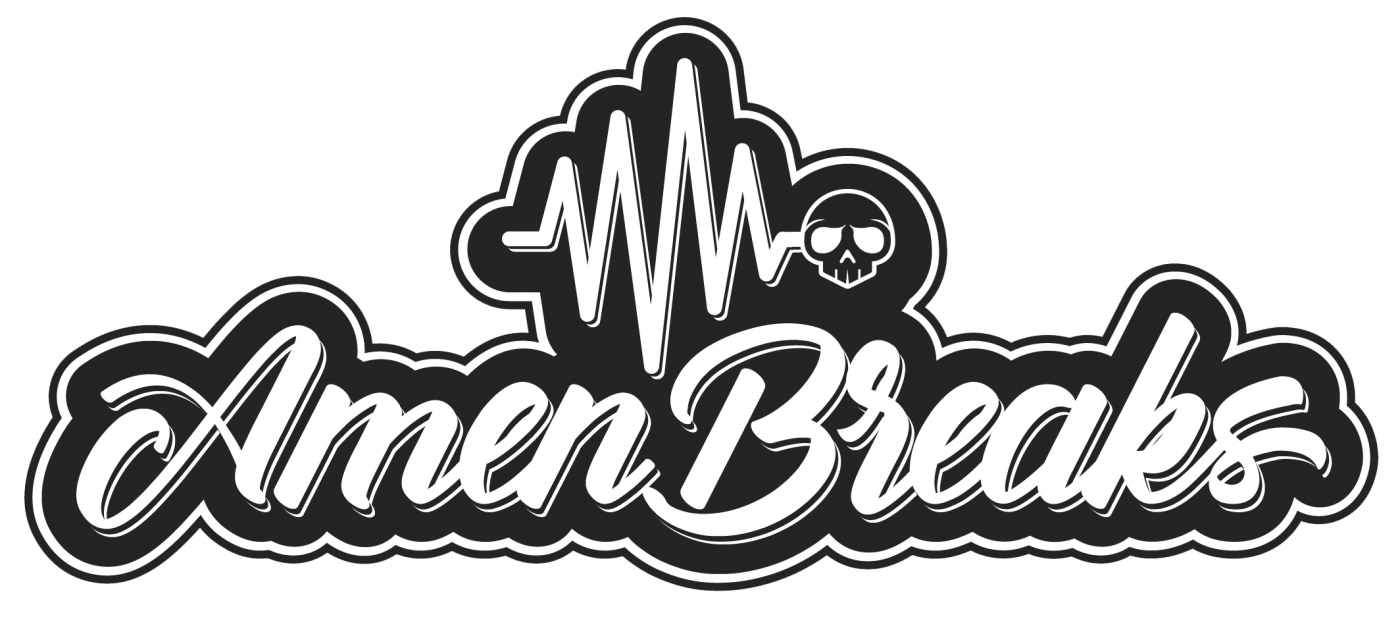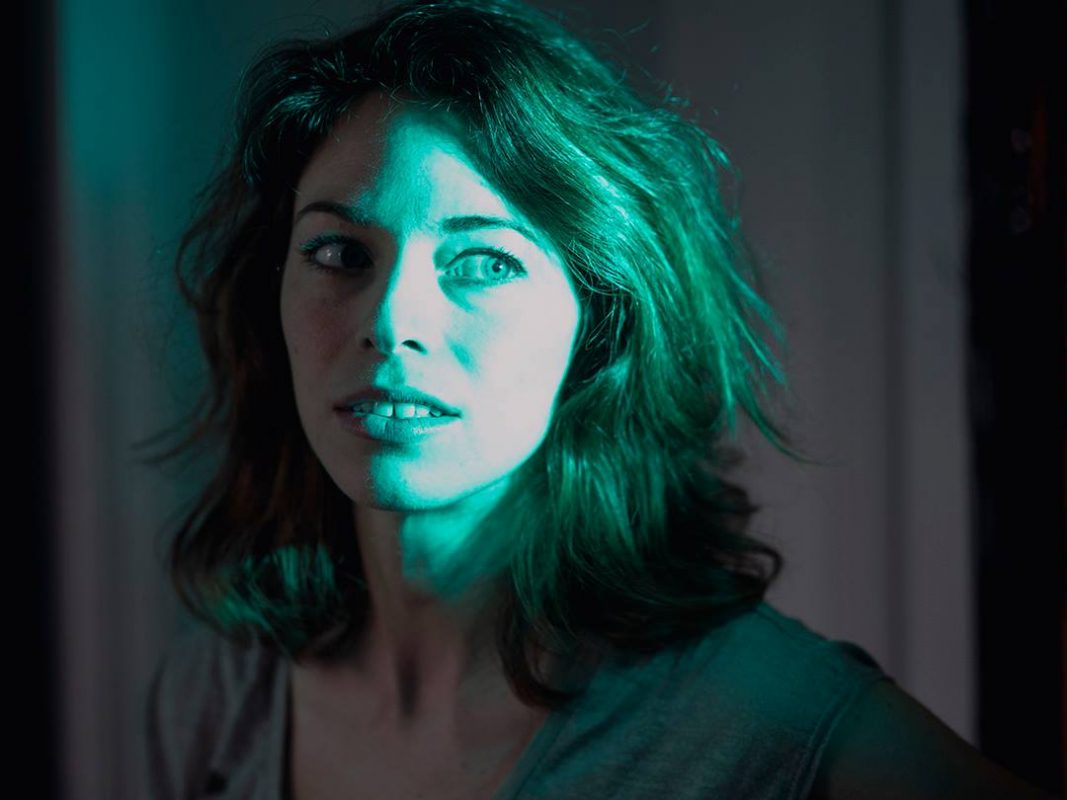Drum & Bass, Introspective, Music History
American Drum And Bass: Talking With TGRBass
Our first of many interviews with American drum and bass artists was with the very talented TGRbass.
Hailing from New York and very much at the forefront of the dnb scene there, TGRbass, real name Alanna Blair, has been instrumental in shaping the community and the sound of the American drum and bass movement.
We caught up with them to get a deeper insight into how dnb sits within the music scene in an already crowded space.
So, how is lockdown treating you?
It’s a little crazy! It seems like the U.K. and New York City are kind of on the same level right now, where it’s different every day and yet there’s a constant isolation. We’ve been indoors for a month now, and I work a few of different jobs that closed down. My life was intrinsically linked to nightlife. One of the jobs I had was bartending at a wonderful club called Elsewhere, which was ranked in DJ Mag’s top 100 list, just in time for everything to close down. So, it’s been a huge life change to no longer have access to nightlife.
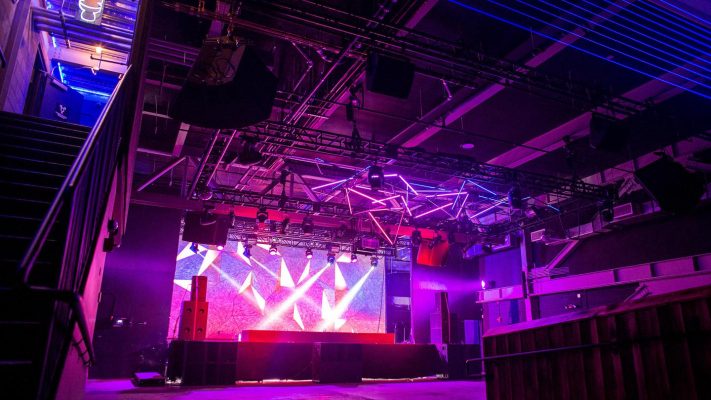
Yeah, I completely understand. I know lots of people within the nightlife and entertainment industry who are completely out of work now. It’s tough all round.
Yes, and my respect and love to them. I hope they find ways to keep the fire burning in the meantime. Now that month one is in the can, I’m finally feeling confident to look at ways to keep music going.
In the past I created a drum and bass duo called Ajazent, with Lexi aka Illexxandra. She’s such a wonderful producer, and so much of our vibe was being in the same room together while we made music. I really do miss the physical proximity. It’s so different trying to do this online, versus face to face, feeling the energy as we’re making a tune.
We’ve featured you before in one of our previous articles, but why don’t you tell us who TGRbass is?
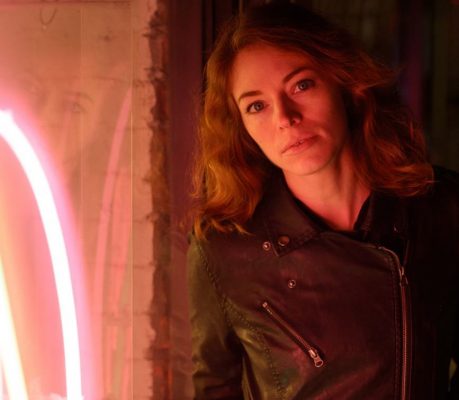 I started my love affair with drum and bass in the late 90’s when I was a teen working in a guitar store. I was heavily influenced by punk and metal in Memphis. I’d play jungle in my car on the way to rock events, or to work, but it was very much a guilty pleasure. There used to be a lot of negative connotation between electronic music and the loss of work for rock musicians. So I wasn’t supposed to like it but I really really liked it.
I started my love affair with drum and bass in the late 90’s when I was a teen working in a guitar store. I was heavily influenced by punk and metal in Memphis. I’d play jungle in my car on the way to rock events, or to work, but it was very much a guilty pleasure. There used to be a lot of negative connotation between electronic music and the loss of work for rock musicians. So I wasn’t supposed to like it but I really really liked it.
After graduating college and moving to New York, I began to get more active in the scene and started going out to events. Memphis didn’t have a lot of electronic music events. In New York I met my partner Billy and found Konkrete Jungle through him. Konkrete Jungle has legendary status, but in real life it was an intimate party. It encouraged and developed artists and djs. It created this lovely kind of family. I met some incredible people through that. I played and curated so many parties there that I asked Mac if I could put Konkrete Jungle down as an affiliation, and he said, ‘yeah sure, why not.’ I was spinning for Funked Dub, Remedy, Driven AM, and Deeper with Valerie Molano. And then TankTop and I started touring parties around America. Recon at The Black Box in Denver, Sonar Tuesdays at Plush in Austin, Amen with Mizeyesis in New Haven, NOLA DNB, DNB Tuesdays in Seattle, Fuego in San Diego, and Brother.ly in Philly are all great events to hit up if you’re in the area.
I threw parties with Natural Selection for a few years, and co-created Carbon Based Beats. At the same time I was doing a Sunday happy hour event called DNB Social, which has morphed into Basssocial. Now I only throw a party once a year or so, but it’s important to me to curate amazing events that are open to all and where everyone feels welcome.
Recently I djed Secret Art Of Science, DB’s new event at Public Records. That’s an early evening event, which is very unusual for drum and bass in New York.
The scene in general feels less male centric right now. There’s room for other people and I think that’s a huge part of the attraction.
Wow, we didn’t know that. Daytime events are very common in the U.K.
Haha, if it’s not in a dank basement at 2am then what is it! But daytime events are really fun.
One of the really beautiful things about working at Elsewhere is that they make you feel like part of a tight-knit group.They hired my duo, TankTop, to open and close for The Orb. We played an ambient inspired liquid set to invite people in and send them out. Then we opened and closed for Amon Tobin, which is the entire opposite side of things. Both times it was really cool to connect with people who wouldn’t normally come to drum and bass events. I was supposed to play a Teklife event there with a stacked lineup! Hoping it’ll pop off once Elsewhere reopens.
In the past few years, my focus has shifted into finding new ears. Drum and bass is still so underground here. I think in the past people sort of wore it like a medal, you know? Like, they knew something that a lot of people didn’t know. But I’ve shifted my focus to opening up the sound and finding fun and creative ways to do it.
So how are people responding to drum and bass? American drum and bass is not paid much attention in the U.K, but there are people like Evol Intent who are the beacons for the sound in the U.S. You really have your ear to the ground, so what is the drum and bass scene like in America?
Big shoutout to Gigantor. Although I absolutely adore jungle, the parties I’ll get involved with lean more towards footwork and ‘bass music’, which is a little more open.
I play a lot of sounds embodied by producers like Stranjah and his label Deviant Audio, who’s fusing dubby sounds with drum and bass, bringing it back to a place that feels familiar. That’s sort of where I like to play at.
It’s so much fun to sneak people into listening to drum and bass without them knowing. I loved a recent Sam Binga set. It was actually the last concert I went to before the lockdown. He was playing a Dubstuy event, which is known for the dubbier end of the spectrum. He took the crowd all over the bpm range. At certain points he was just playing tearout drum and bass and I was seeing people dance their asses off to it! Where if you had told them, we’re going to a drum and bass event, they would have been like, ‘ahh I don’t know.’
The scene in general feels less male centric right now. There’s room for other people and I think that’s a huge part of the attraction.
That’s really interesting. Women are getting a lot more attention in the world of drum and bass in the U.K. although it’s still a hugely male dominated space. How is it for women in the U.S? Do you feel you’re getting ample opportunity?
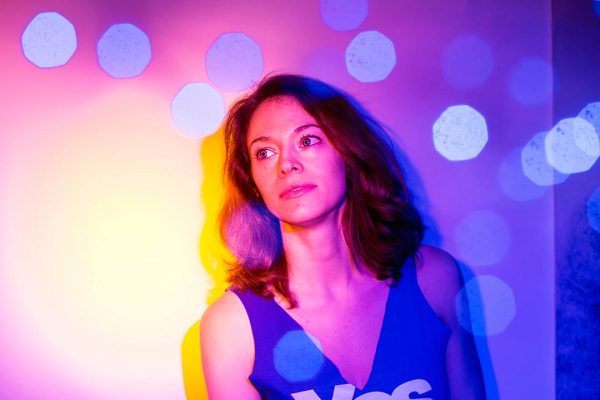 I think it’s a really exciting time. I’ve been a member of DNB Girls for a while now, and there is so much talent there. Then you have producers like Quadrant & Iris who have been releasing on some really big labels for a long time.
I think it’s a really exciting time. I’ve been a member of DNB Girls for a while now, and there is so much talent there. Then you have producers like Quadrant & Iris who have been releasing on some really big labels for a long time.
At the same time I think you’re starting to see large labels start to pay attention to female, nonbinary, and trans producers. One of the big parts of being a dj is not just making your own music, it’s also getting that music signed, or at least released somehow.
In the beginnings of drum and bass you had DJ Tamsin, One True Parker, 1.8.7, obviously Kemistry and Storm. There was a lot of female energy behind it that at some point fell to the wayside, but it’s been interesting to see the way that it’s come back.
I’m a big fan of events that are female forward from the top down. So, the promoter is female or nonbinary; the manager at the venue is female or nonbinary. I also think there needs to be a lot of room for not just white folk. I’d like to see the same energy applied to intersectionality, so that Black people and People of Color can come into a dnb party and feel welcome.
It’s easy to make goals to make an event more inclusive and a label more inclusive, but it’s not about dragging someone in who doesn’t feel comfortable there. It’s about making folks feel welcome and truly making the steps to bring people in on their own terms. In the past couple of years, I’ve really seen that happening.
Drum and bass is still so underground here. I think in the past people sort of wore it like a medal, you know?
New York is known for house music and techno, and so much of the scene is queer focused, very Trans friendly, and hopefully also Black and Latino and Indigenous friendly. And I’m feeling that push in drum and bass now. Another big crossover I’ve been seeing is the Teklife Crew out of Chicago. And when one of my favourite producers, Sinistarr out of Detroit, plays an event, you’re guaranteed to see a dancefloor full of diverse musical tastes and backgrounds.
It’s a really exciting time. That said, everything comes with a caveat now. Because it’s all closed. So where do we go after this? What will we be after this? What venues are still going to be around? There’s so many independent venues, even at the best of times, hanging on by a thread. So I’m curious to see when all of this [the lockdown] is over, what will the New York drum and bass scene look like?
We are all concerned about where the scene will be after the lockdown is over. Festival season is done and many big festivals are concerned about the huge losses they are facing. It’s a scary time. That said, we wanted to go back to what you said about inclusiveness. Do you feel that people are gravitating towards the scene because of its inclusiveness? Why was drum and bass, at first, reticent to include those minority groups?
I was fortunate to come into the scene with djs who had been around far longer than me, who unfortunately had experienced assault by a prominent dnb artist at the time. It felt like that was a bit the culture in the early days, which pushed a lot of people away and kept them there.
Many recent New York clubs are very much committed to safety and inclusion on the dancefloor. And they make a point for basically any dance music lineup to have some sort of representation. You don’t often see an all adult white male lineup here, and that’s on purpose. If you see someone who reminds you of yourself on stage, you’re more likely to feel comfortable and confident tearing up the dance floor.
It’s interesting to see the scene growing. There’s a lot of unspoken rules that have had to be broken, and a lot of it is seeing the people I revered in the 90’s, and asking myself, who did they sign? Who do they represent? And it’s interesting to see that start to shift.
There’s a new generation who witnessed drum and bass through its peaks and valleys and are willing to expand and grow it in a way that’s more inclusive. It also seems healthier. I see less drug abuse, I see less alcoholism, I see a little more of what made raves so beautiful back in the day. You used to see a lot of people under the influence, but you can also see what I used to call straightedge folk having a good time too. I’d like to think it’s coming back to that.
A lot of bars and venues are promoting non-alcoholic beverages, which is a sign of the times. There can be less aggression when there’s less alcohol. That’s not say we all need to ditch alcohol – everything in moderation. Putting the music first, and making sure the lineups reflect that there’s room enough for everybody to make music and share it, that’s really the future.
That’s amazing to hear and we’re glad that the community vibe is getting stronger.
So, American drum and bass is in its fledgling stage, but it also isn’t. There’s a lot of snobbery in the U.K. scene towards American artists, however, people are starting to take American drum and bass and artists more seriously so what sort of evolution do you see happening in the music?
There’s an old regime feel in the U.K. for sure. I think one of the interesting parts about the American drum and bass scene is that because so few people know about it, we’re far less encumbered by rules. Labels like Black Marble Collective, Freshmoon, Deviant Audio, Free Love Digital, Worst Behavior, Shoot Recordings, Onset Audio, and Aufect push the boundaries of drum and bass. And there’s labels like Plush, Flight Pattern, Driven AM, Section 8, and Warm Communications flying their dnb flag high.
Lowrise Sounds started out as a Facebook group, and the sounds posted there are pretty much guaranteed not to be be boom-bap. That’s where I started to hear rave samples used in really interesting ways. And I think American dance music in general has taken cues from DJ Rashad and Teklife. Ghettofunk, juke, jit and footwork are showing up in my favorite drum and bass mixes. I absolutely adore djs who weave them together, and producers who combine elements to create crossover tunes.
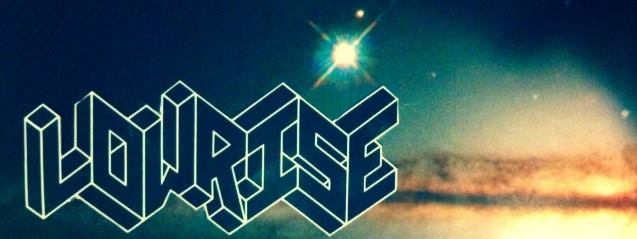
When I met Lexi and we created Ajazent, we made lots of music that was on the verge of drum and bass. We gave ourselves a lot of freedom to use any sounds that we liked. Similarly, I think it’s important we play drum and bass at mixed and open genre nights, so that people can experience it at their own pace. In the New York scene, the only rule is does it get people dancing? I think we can get people to experience and experiment with drum and bass, with respect to the past and without being limited by it. Some shows I curate or dj have four or five folks in the back scratching their beards saying, ‘I don’t know if this is drum and bass.’ But then you’ll have most people on the dance floor who really don’t care what it is.
Agreed. We’ve made the mistake in the past of getting people to come to drum and bass nights where its been hardcore dnb/jungle/neuro and it really tuned people off, so it’s great that the American scene is looking to include people through mixing it up.
I played Global Drum and Bass’s Collective’s first show on Zoom, which was so much fun. There were 4 djs from the US and the UK: Caz Coronel, Arietta, DJ Shorty and me. Krystian regulated the chat and highlighted videos of different people dancing. It’s a weird time to be trying to make human connection, but we are making it work.
I started with hiphop and then moved into drum and bass remixes of hiphop classics. Because Americans on the East coast know their hiphop, it’s a method to introduce people to drum and bass. As a dj, I try to be sensitive to that. You can catch the mix on my Twitch channel.
It’s interesting to see the scene growing. There’s a lot of unspoken rules that have had to be broken…
It’s been amazing to speak with you. The insight you have given us here are far more in-depth than we could have imagined and you, as a highly influential figure within the American drum and bass scene, have really opened our eyes to how diverse and, frankly, exciting the scene is. Before we go, we have one last question that we’d like to get an answer for; for women in the drum and bass scene, what words of advice and inspiration would you give them?
It’s an interesting question. I recently came out as a non-binary being. I did this because, especially in my upbringing, women had specific roles, preferences, and emotional predilections that I have let go of completely.
I definitely support women djs and producers. My biggest piece of advice is to seize the means of production, in all ways. So it’s not enough to just see female, non-binary and trans dj’s and producers. It’s also the owners of the clubs. To go into a place and see a woman at Front of House doing the sound. That’s huge. Women have always been behind the scenes running labels and events, but there has been a shift where things are proudly and loudly being run by women and non-binary folk. We need to step more in that direction.
Men aren’t the problem. The patriarchy hurts everyone at the end of the day. I don’t think anyone is to blame, but going forward, everyone has to be involved. My advice for women would be not to see anyone as the enemy, but to see everything as a possibility.
